Strange Mummies Of Venzone: Ancient Bodies That Never Decompose Remain An Unsolved Mystery
Ellen Lloyd - AncientPages.com - These strange mummies were found in the Italian city of Venzone, a small hamlet in the province of Udine.
The first mummy was unearthed in 1647, and soon thereafter scores of similar ancient bodies were discovered buried beneath the town's cathedral.
Venzone mummies 1920-30's postcard. Credit: Public Domain
Scientists were able to recover as many as 42 mummies, then after an earthquake struck the region in 1976, the number of mummies reduced to only 15.
The Venzone mummies were unusual and quite puzzling because the bodies had never decomposed. Scientists started investigating the ancient corpses to determine what prevented the mummies from deteriorating.
Mummies of Venzone. Image credit: Jean-Marc Pascolo - CC BY-SA 3.0
The mummies were all alike in appearance and showed the same peculiarities when dissected. The bodies preserved their forms and features. Although they were greatly altered, they were still recognizable.
The corpses were extremely light, and researchers noticed the skin, which was is of a yellowish-brown tint, looked like tanned leather. The weight of the mummies varied from 22 to 44 pounds for the tallest individuals.
It soon became clear that natural processes mummified these people, but the cause of the Venzone mummies' preservation remained a mystery.
In the Literary Digest translated portions of an article by F. Savorgnan de Brazza in which he stated that "the preservation of dead bodies may be brought about artificially by the use of chemicals, as is the case with the mummies of Egypt, Peru, and Mexico. The mummification is sometimes also natural; certain tombs and certain cemeteries have the property of preserving and mummifying bodies, and though these are not very numerous, they are not as rare as one might think. .. In all such cases bodies are found to be dried and mummified naturally so that after removal from their tombs they resist the destructive action of the atmosphere indefinitely.
There have been many hypotheses regarding this preservation of bodies in the tombs of Venzone. Some have attributed it to the presence of salts of niter, alumina, or lime, but there are no such salts in the tombs.
New investigations have proved that the mummification is not due to chemical action, but to a biologic process."
Modern scientists have been able to blame this mummification on Hypha tombicina. The microscopic parasite fungus likely does it by rapidly dehydrating the bodies before they can begin to decompose. The fungus grows in the Cathedral graves and manages to dehydrate a body in one year and is responsible for the parchment-like skin of the body. The Hypha tombicitia was discovered in several parts of the bodies and it also covered the wooden coffins.
Mummy was found in the Roman cemetery chapel nearby the cathedral Sant'Andrea Apostolo in Venzone. Image credit: Joadl - CC BY-SA 3.0
However, there is still some doubt that the Hypha parasite is the true cause. Some scientists assert the limestone present in the surrounding earth may be the culprit.
The practice of burying dead in churches was later banned, which prevented further observation of the natural process. While several theories have been offered as to the cause of the mummies' preservation, there is still no conclusive opinion as to what exactly did stop the decomposition process, and the mummies of Venzone remain an ancient mystery.
Updated on March 17, 2022
Written by Ellen Lloyd – AncientPages.com Staff Writer
Copyright © AncientPages.com All rights reserved. This material may not be published, broadcast, rewritten or redistributed in whole or part without the express written permission of AncientPages.com
More From Ancient Pages
-
 What Can New Method Radiocarbon 3.0 Reveal About The Interaction Between Homo Sapiens And Neanderthals?
Archaeology | Mar 29, 2023
What Can New Method Radiocarbon 3.0 Reveal About The Interaction Between Homo Sapiens And Neanderthals?
Archaeology | Mar 29, 2023 -
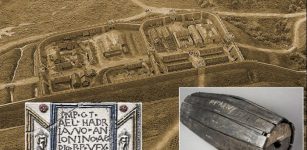 Antonine Wall: Impressive Roman Frontier Built By Empire’s Three Legions In Scotland
Civilizations | Jan 18, 2018
Antonine Wall: Impressive Roman Frontier Built By Empire’s Three Legions In Scotland
Civilizations | Jan 18, 2018 -
 How Did Sea Level Rise Impact Human Groups During Mesolithic And Neolithic Periods?
Archaeology | May 20, 2022
How Did Sea Level Rise Impact Human Groups During Mesolithic And Neolithic Periods?
Archaeology | May 20, 2022 -
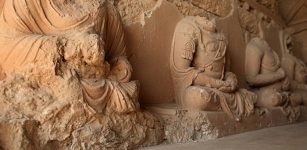 Takshashila: Renowned Learning Center That Attracted Buddhist Masters, Disciples And Students Of The World
Featured Stories | Jul 23, 2016
Takshashila: Renowned Learning Center That Attracted Buddhist Masters, Disciples And Students Of The World
Featured Stories | Jul 23, 2016 -
 Ancient DNA Reveals Hunter-Gatherers From Mexico Moved To California 5,200 Years Ago
DNA | Nov 29, 2023
Ancient DNA Reveals Hunter-Gatherers From Mexico Moved To California 5,200 Years Ago
DNA | Nov 29, 2023 -
 Oxford University Is Older Than The Aztec Empire – Historical Records Say
Ancient History Facts | Dec 5, 2017
Oxford University Is Older Than The Aztec Empire – Historical Records Say
Ancient History Facts | Dec 5, 2017 -
 Ancient Symbol Seed Of Life Contains Hidden Secrets Of The Seven Days Of Creation
Ancient Symbols | Oct 8, 2017
Ancient Symbol Seed Of Life Contains Hidden Secrets Of The Seven Days Of Creation
Ancient Symbols | Oct 8, 2017 -
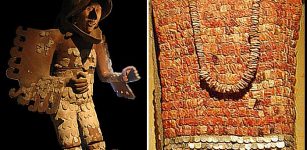 Fearsome Aztec Eagle And Jaguar Warriors Of Mesoamerica
Featured Stories | Sep 14, 2023
Fearsome Aztec Eagle And Jaguar Warriors Of Mesoamerica
Featured Stories | Sep 14, 2023 -
 Algonquin People And The Myth Of The Medicine Woman In The Moon
Featured Stories | Feb 1, 2016
Algonquin People And The Myth Of The Medicine Woman In The Moon
Featured Stories | Feb 1, 2016 -
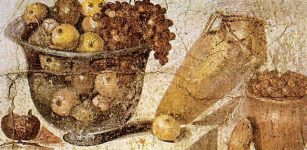 Food In Ancient Roman Funerary Meals Was Similar To That Consumed During Life
Archaeology | Aug 30, 2022
Food In Ancient Roman Funerary Meals Was Similar To That Consumed During Life
Archaeology | Aug 30, 2022 -
 Magnificent Burial Chamber Of Idy, Ancient Egyptian Priestess Of Goddess Hathor Discovered In Asyut
Archaeology | Nov 15, 2024
Magnificent Burial Chamber Of Idy, Ancient Egyptian Priestess Of Goddess Hathor Discovered In Asyut
Archaeology | Nov 15, 2024 -
 Why Did Modern Humans Replace The Neanderthals? The Key Might Lie In Our Social Structures
Featured Stories | Jun 18, 2024
Why Did Modern Humans Replace The Neanderthals? The Key Might Lie In Our Social Structures
Featured Stories | Jun 18, 2024 -
 Brihadeshwara Temple – Outstanding Example Of Chola Architecture In Tamil Nadu, India
Featured Stories | Aug 26, 2021
Brihadeshwara Temple – Outstanding Example Of Chola Architecture In Tamil Nadu, India
Featured Stories | Aug 26, 2021 -
 Mystery Of The Royal Tombs At Vergina Deepens – Has Alexander The Great’s Sacred Purple Tunic Been Found Inside?
Archaeology | Oct 28, 2024
Mystery Of The Royal Tombs At Vergina Deepens – Has Alexander The Great’s Sacred Purple Tunic Been Found Inside?
Archaeology | Oct 28, 2024 -
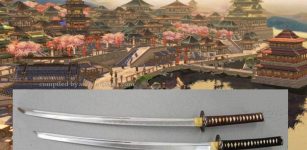 Katana ‘Soul Of The Samurai’ – Most Famous Japanese Sword With Long Tradition
Ancient History Facts | Apr 12, 2018
Katana ‘Soul Of The Samurai’ – Most Famous Japanese Sword With Long Tradition
Ancient History Facts | Apr 12, 2018 -
 What Was Legio Martia And Why Were The Roman Soldiers Called The Martians?
Ancient History Facts | Jan 5, 2018
What Was Legio Martia And Why Were The Roman Soldiers Called The Martians?
Ancient History Facts | Jan 5, 2018 -
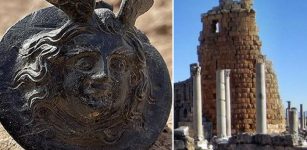 1,800-Year-Old Military Medal with Medusa Head Unearthed In Ancient City of Perge (Perrhe), Southeastern Turkey
Archaeology | Oct 11, 2022
1,800-Year-Old Military Medal with Medusa Head Unearthed In Ancient City of Perge (Perrhe), Southeastern Turkey
Archaeology | Oct 11, 2022 -
 Mysterious Royston Cave And Its Unexplained Carvings Still Puzzle Scientists
Featured Stories | Jan 11, 2014
Mysterious Royston Cave And Its Unexplained Carvings Still Puzzle Scientists
Featured Stories | Jan 11, 2014 -
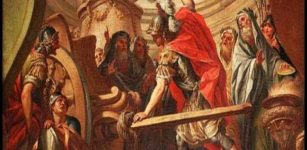 Gordian Knot And How Alexander The Great Managed To Outmaneuver The Problem
Featured Stories | Jul 19, 2024
Gordian Knot And How Alexander The Great Managed To Outmaneuver The Problem
Featured Stories | Jul 19, 2024 -
 Viking Age Mass Grave Reveals Gruesome Discovery At Historical Village Of Repton, England
Archaeology | Feb 4, 2018
Viking Age Mass Grave Reveals Gruesome Discovery At Historical Village Of Repton, England
Archaeology | Feb 4, 2018




